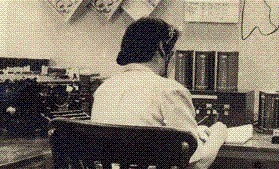Asia-Pacific Region Intelligence Center
Burma's 1988 protests (버마 군부 88년 진압으로 시민 학생 3000명 사망) 본문
Burma's 1988 protests (버마 군부 88년 진압으로 시민 학생 3000명 사망)
CIA Bear 허관(許灌) 2007. 9. 29. 19:32|
| |||
In September 1987, Burma's then ruler General Ne Win compounded years of general economic mismanagement by suddenly cancelling certain currency notes. As a superstitious man, he wanted only 45 and 90 kyat notes in circulation. This was because they were divisible by nine, which he considered a lucky number. But by cancelling the other notes which people held, much of their savings were wiped out overnight. Protests about the mounting economic crisis were started by Burma's students, especially in Rangoon. On 13 March 1988 students protesting outside the Rangoon Institute of Technology clashed with the military and Phone Maw, a fourth year engineering student, was shot dead. '8-8-88' His death triggered further protests, which gathered pace as the students were joined by ordinary citizens and Burma's much revered monks. On 8 August 1988 - known as 8-8-88 - hundreds of thousands of people took part in protests across the country, calling for democracy. Tom White, the British cultural attaché stationed in Rangoon at the time, has told the BBC how the general strike, spearheaded by students and monks, was accompanied by a mood of euphoria.
"The streets resounded with the chant (in Burmese) 'We want full democracy; that's what we want'", Mr White said. Like the protesters of the last few days, students sported their symbol of the fighting peacock, and monks carried their alms bowls upside down to show they would not accept handouts from the military, again as a protest.
On 26 August, Aung San Suu Kyi, the daughter of independence hero Aung San who had only recently returned to Burma to nurse her sick mother, made a speech at Shwedagon Pagoda and became the public face of the democracy movement. General Ne Win had resigned as party leader in late July, but warned that "when the army shoots, it shoots straight". On 18 September, the army proved the general right. Soldiers sprayed automatic rifle fire into crowds of protesters. Other demonstrators were carried away in trucks and never seen again. Human rights groups say at least 3,000 people were killed. | |||
'Guide Ear&Bird's Eye30 > 미얀마[버마]' 카테고리의 다른 글
| 반기문 유엔 사무총장, 버마사태 중재위해 특사 파견 (E) (0) | 2007.09.29 |
|---|---|
| 88 Generation Students (버마 88년 학생운동 세대) (0) | 2007.09.29 |
| 미얀마 민주화 운동을 강경 진압한 군사정부 책임자 얼굴 (0) | 2007.09.29 |
| New protests on Rangoon streets (0) | 2007.09.29 |
| 반체제 버어마인사, 국제인권단체, 유혈진압 중단 촉구 (0) | 2007.09.29 |



